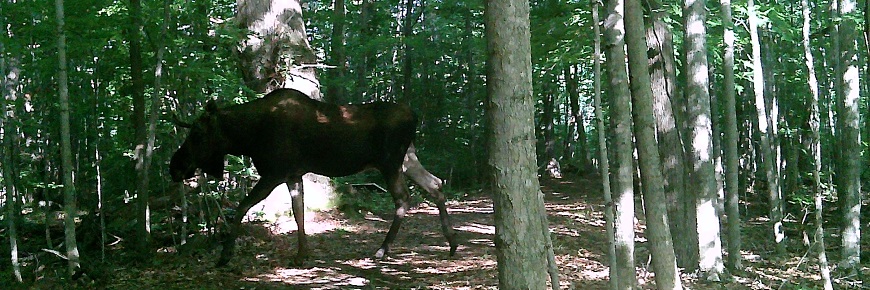
Moose
Fort St. Joseph National Historic Site
The largest animal found at Fort St. Joseph National Historic Site is the moose (Alces alces). Moose are the world's largest living deer - standing almost two metres at the shoulder. They have a long face with overhanging muzzle, a dewlap or 'bell' under the throat, and long powerful legs that allow the moose run at speeds up to 56km/h. The moose is usually dark brown to black, with beige or gray lower legs.
The male moose, or bull, has large, palmate antlers that drop in the fall after the mating season and re-grow each summer. The female, or cow, does not have antlers, and often gives birth to one or two calves in May or June. A moose can live up to 20 years in the wild.
The marshy and forested areas all around Fort St Joseph National Historic Site make an ideal moose habitat. They eat non-grass herbaceous plants in the summer and the bark, twigs and buds of woody plants in the winter. They also spend a lot of their time in water and are excellent swimmers, which gives them protection from predators as well as access to aquatic plants.
- Date modified :